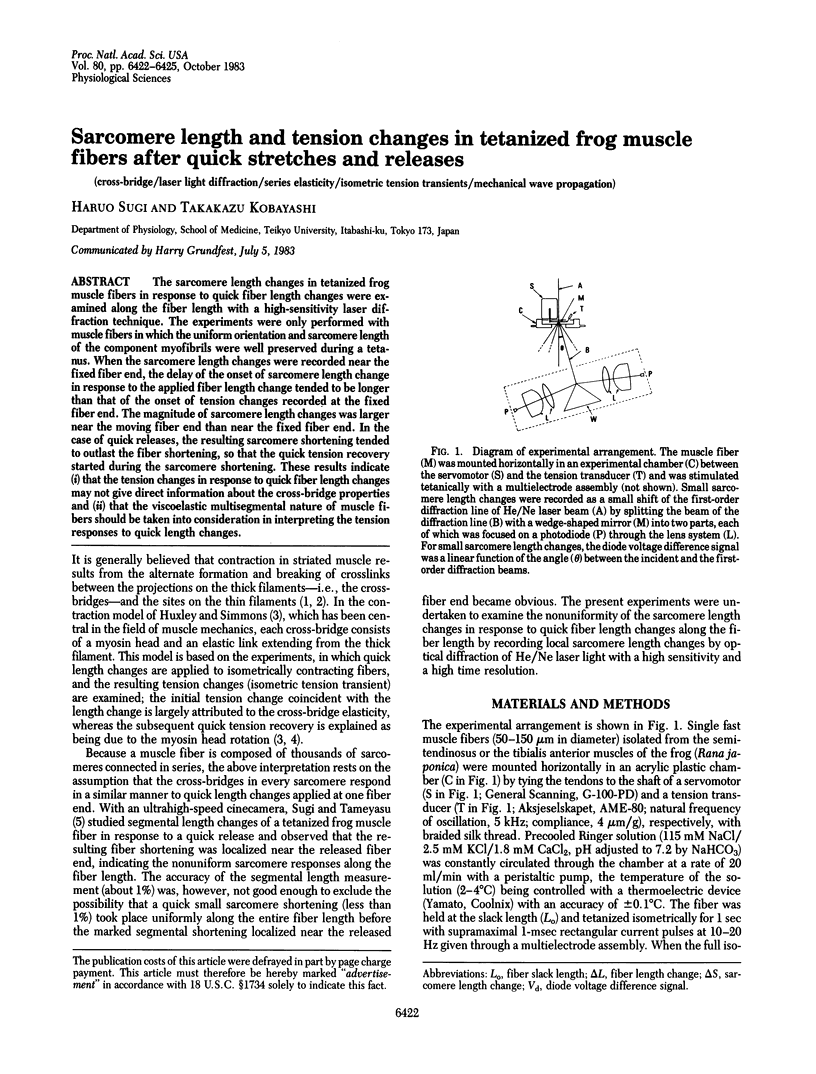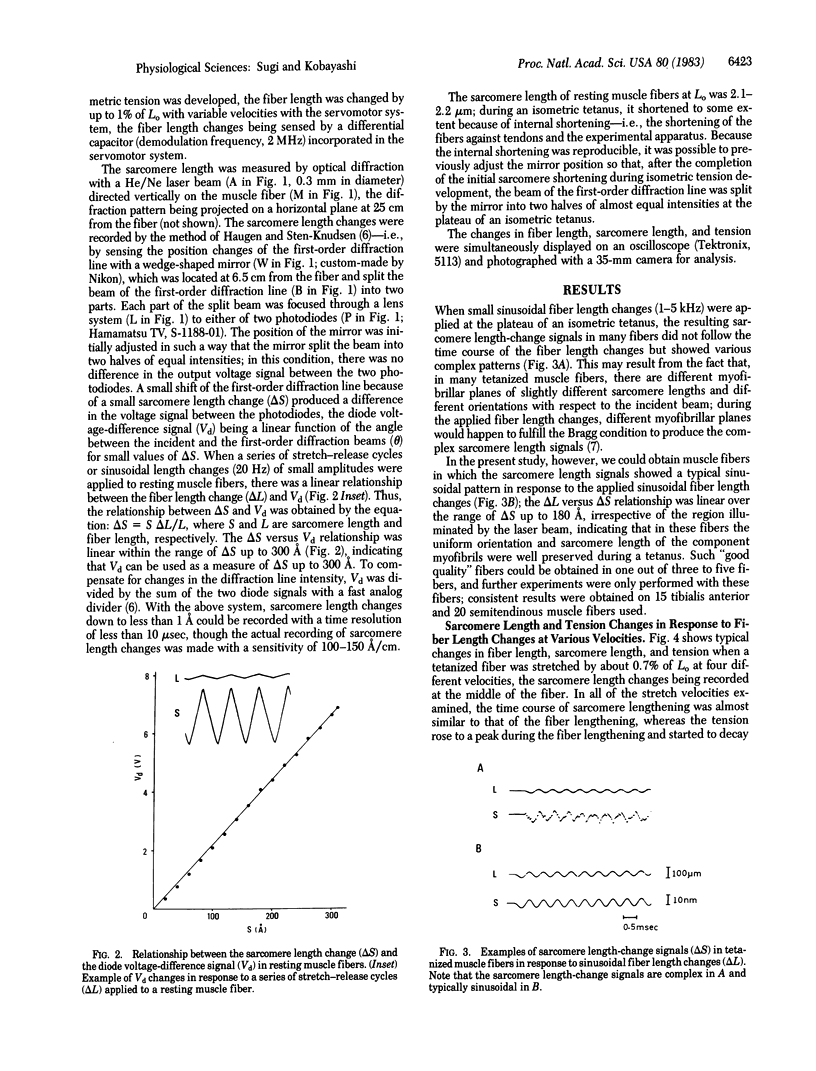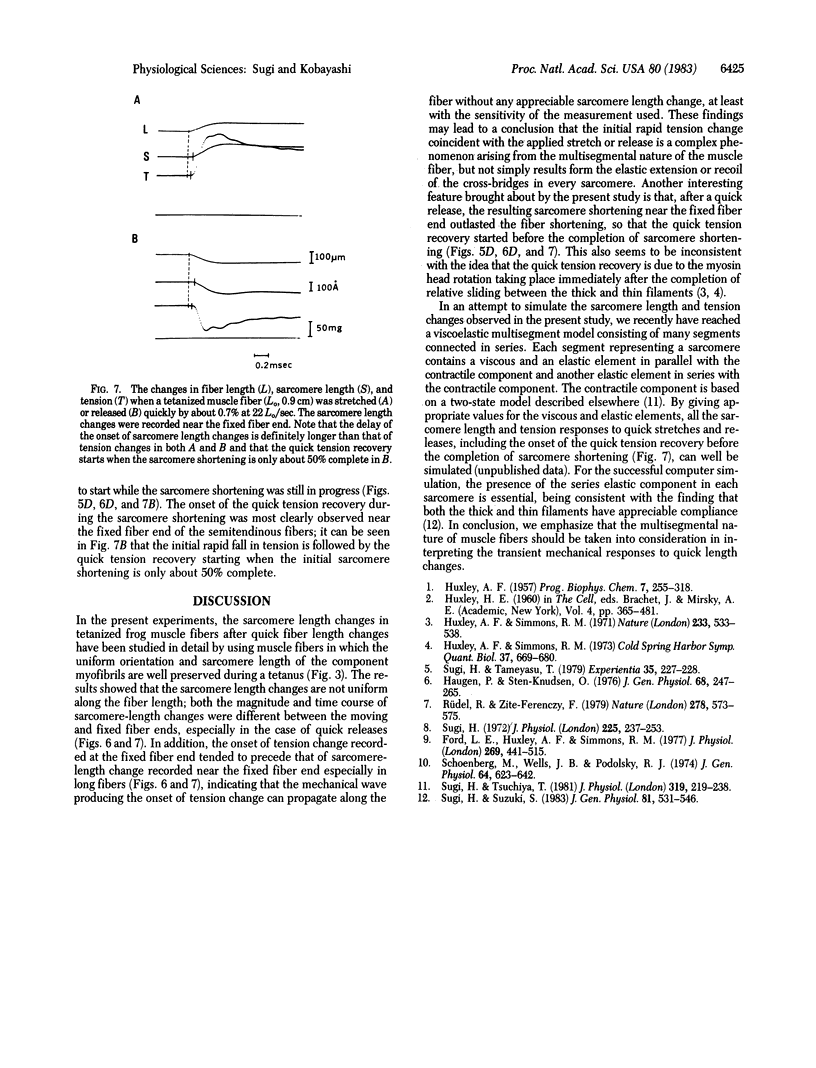Abstract
The sarcomere length changes in tetanized frog muscle fibers in response to quick fiber length changes were examined along the fiber length with a high-sensitivity laser diffraction technique. The experiments were only performed with muscle fibers in which the uniform orientation and sarcomere length of the component myofibrils were well preserved during a tetanus. When the sarcomere length changes were recorded near the fixed fiber end, the delay of the onset of sarcomere length change in response to the applied fiber length change tended to be longer than that of the onset of tension changes recorded at the fixed fiber end. The magnitude of sarcomere length changes was larger near the moving fiber end than near the fixed fiber end. In the case of quick releases, the resulting sarcomere shortening tended to outlast the fiber shortening, so that the quick tension recovery started during the sarcomere shortening. These results indicate (i) that the tension changes in response to quick fiber length changes may not give direct information about the cross-bridge properties and (ii) that the viscoelastic multisegmental nature of muscle fibers should be taken into consideration in interpreting the tension responses to quick length changes.
Full text
PDF



Selected References
These references are in PubMed. This may not be the complete list of references from this article.
- Ford L. E., Huxley A. F., Simmons R. M. Tension responses to sudden length change in stimulated frog muscle fibres near slack length. J Physiol. 1977 Jul;269(2):441–515. doi: 10.1113/jphysiol.1977.sp011911. [DOI] [PMC free article] [PubMed] [Google Scholar]
- HUXLEY A. F. Muscle structure and theories of contraction. Prog Biophys Biophys Chem. 1957;7:255–318. [PubMed] [Google Scholar]
- Haugen P., Sten-Knudsen O. Sarcomere lengthening and tension drop in the latent period of isolated frog skeletal muscle fibers. J Gen Physiol. 1976 Sep;68(3):247–265. doi: 10.1085/jgp.68.3.247. [DOI] [PMC free article] [PubMed] [Google Scholar]
- Huxley A. F., Simmons R. M. Proposed mechanism of force generation in striated muscle. Nature. 1971 Oct 22;233(5321):533–538. doi: 10.1038/233533a0. [DOI] [PubMed] [Google Scholar]
- Rüdel R., Zite-Ferenczy F. Do laser diffraction studies on striated muscle indicate stepwise sarcomere shortening? Nature. 1979 Apr 5;278(5704):573–575. doi: 10.1038/278573a0. [DOI] [PubMed] [Google Scholar]
- Schoenberg M., Wells J. B., Podolsky R. J. Muscle compliance and the longitudinal transmission of mechanical impulses. J Gen Physiol. 1974 Dec;64(6):623–642. doi: 10.1085/jgp.64.6.623. [DOI] [PMC free article] [PubMed] [Google Scholar]
- Sugi H., Tameyasu T. The origin of the instantaneous elasticity in single frog muscle fibres. Experientia. 1979 Feb 15;35(2):227–228. doi: 10.1007/BF01920632. [DOI] [PubMed] [Google Scholar]
- Sugi H. Tension changes during and after stretch in frog muscle fibres. J Physiol. 1972 Aug;225(1):237–253. doi: 10.1113/jphysiol.1972.sp009935. [DOI] [PMC free article] [PubMed] [Google Scholar]
- Sugi H., Tsuchiya T. Isotonic velocity transients in frog muscle fibres following quick changes in load. J Physiol. 1981;319:219–238. doi: 10.1113/jphysiol.1981.sp013903. [DOI] [PMC free article] [PubMed] [Google Scholar]
- Suzuki S., Sugi H. Extensibility of the myofilaments in vertebrate skeletal muscle as revealed by stretching rigor muscle fibers. J Gen Physiol. 1983 Apr;81(4):531–546. doi: 10.1085/jgp.81.4.531. [DOI] [PMC free article] [PubMed] [Google Scholar]


